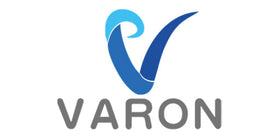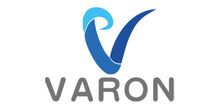Conquering New Heights: Can Oxygen Concentrators Help You Breathe Easier While Climbing?
CODE
For mountaineers and climbers, scaling new heights is a pursuit of both physical challenge and breathtaking scenery. But as they ascend, the very air they breathe becomes a challenge. Thin air, a hallmark of high altitudes, presents a significant hurdle.
Our bodies, accustomed to the life-giving oxygen levels at sea level, struggle to function optimally as the amount of available oxygen decreases. This can lead to a number of altitude-related illnesses, hindering performance and potentially compromising safety. So, what can be done to address this challenge and ensure climbers can conquer the climb without succumbing to oxygen deprivation?
Traditionally, climbers have relied on bottled oxygen to combat this issue. However, recent advancements have led to the exploration of portable oxygen concentrator as a potential alternative. But are these devices truly a viable option for mountaineering? Let's delve deeper and explore the breathtaking world of supplemental oxygen for climbers.
Understanding Breath and Oxygen Deprivation at High Altitudes

The air we breathe is a vital mixture of gases, with oxygen playing the starring role. At sea level, the atmosphere is roughly 21% oxygen, a percentage that seems ordinary until you consider its critical function. This oxygen is the fuel that powers our cells' mitochondria, the tiny engines that keep our bodies humming. Every breath we take delivers fresh oxygen molecules, allowing these cellular power plants to generate energy through a process called aerobic respiration.
As we ascend in altitude, something dramatic happens to this vital gas. Atmospheric pressure, the force exerted by the weight of air molecules pressing down on us, starts to decrease. This drop in pressure has a domino effect on the amount of oxygen available. Even though the percentage of oxygen in the air remains roughly the same (around 21%), the total number of oxygen molecules per breath decreases significantly. This decline in the partial pressure of oxygen (pO2) – the measure of oxygen available for our bodies to absorb – throws a wrench into our cellular machinery.

The human body is a remarkable adaptation machine, but there's a limit to how quickly it can adjust to a significant drop in pO2. Even at moderate altitudes, typically around 8,000 feet (2,400 meters), this oxygen deprivation can trigger a cascade of physiological changes known as Acute Mountain Sickness (AMS). Think of AMS as your body's way of throwing up a red flag, signaling that it's struggling to cope with the new environment.
Symptoms of AMS can range from mild annoyances to debilitating discomfort. Here's a closer look at some of the common culprits:

- Headaches: Throbbing or persistent headaches are a hallmark symptom of AMS. The exact cause is still being unraveled, but it's likely a combination factors, including vasodilation (widening of blood vessels) and changes in fluid balance in the brain.
- Dizziness and lightheadedness: The decrease in oxygen delivery to the brain can lead to dizziness, lightheadedness, and feelings of imbalance.
- Nausea and vomiting: These unpleasant digestive issues can be triggered by various factors at altitude, including hormonal changes, irritation of the gut lining, and the overall stress response to oxygen deprivation.
- Fatigue and weakness: Feeling drained and sluggish is a common complaint at altitude. This is a direct consequence of your cells having less oxygen to generate energy.
- Shortness of breath: Even at rest, you might feel like you're exerting yourself more than usual. This is because your body is working harder to breathe and extract oxygen from the thinner air.
While AMS is generally unpleasant, it's usually self-limiting and resolves with descent or proper acclimatization (gradually ascending to allow your body to adjust). However, it's important to be aware of more serious altitude illnesses that can develop, such as:

- High Altitude Pulmonary Edema (HAPE): This potentially life-threatening condition involves fluid buildup in the lungs, making breathing even more difficult. Symptoms can include a persistent cough with pink or bloody sputum, severe shortness of breath, and rapid heart rate.
- High Altitude Cerebral Edema (HACE): This is a swelling of the brain caused by fluid buildup. Symptoms can be subtle at first but can progress rapidly to confusion, disorientation, loss of coordination, and ultimately coma. HACE is a medical emergency requiring immediate descent and medical attention.
Understanding the effects of oxygen deprivation at high altitudes is crucial for any climber venturing beyond the comfort zone of sea-level oxygen levels. By recognizing the early signs of AMS and taking appropriate action, climbers can ensure a safe and enjoyable journey to the summit.
Can Oxygen Concentrator Help?
Oxygen concentrator are healthcare devices that electronically filter the surrounding air, separating nitrogen from oxygen and delivering a higher concentration of oxygen (typically around 90-95%) to the user through a nasal cannula.
The concept behind using oxygen concentrator in mountaineering is to provide supplemental oxygen, effectively countering the effects of oxygen deprivation. While not a substitute for proper acclimatization (gradual ascent to allow your body to adjust), oxygen concentrator have the potential to:
- Reduce or alleviate symptoms of AMS, such as headaches, fatigue, and shortness of breath.
- Improve sleep quality at high altitudes, allowing for better recovery.
- Enhance physical performance and endurance during climbs.
VARON VP-1 Portable Oxygen Concentrator: A Potential Ally for Climbers
The VARON VP-1 portable oxygen concentrator is a lightweight (6.05 lbs) and user-friendly option for those considering supplemental oxygen support during climbs. Here's how the VP-1 can potentially benefit climbers:
- Adjustable Oxygen Flow: The VP-1's 1-5L/min adjustable oxygen flow allows you to tailor oxygen delivery to your specific needs.
- Long Battery Life: The built-in battery offers 1-3 hours of operation, and the included car adapter allows for charging on the go.
- Easy Operation: The large LCD screen and user-friendly controls make the VP-1 simple to operate even in challenging conditions.
Frequently Asked Questions (FAQs)
1. Can a portable oxygen concentrator fully prevent altitude sickness?
No. Portable oxygen concentrators can help reduce symptoms of altitude sickness by providing supplemental oxygen, but they cannot replace proper acclimatization. Climbers must still ascend gradually, stay hydrated, and monitor their health closely.
2. Is the VARON VP-1 suitable for extremely high-altitude expeditions (above 18,000 ft)?
The VP-1 is most effective at lower to moderate altitudes. For expeditions above 18,000 feet, where oxygen levels drop dramatically, bottled oxygen remains the more reliable option due to its steady, high-flow oxygen delivery.
3. How long does the VP-1 portable oxygen concentrator battery last during a climb?
The VARON VP-1 offers 1–3 hours of continuous operation depending on the selected flow rate. Climbers can extend usage by carrying extra batteries or using the included car adapter for recharging during rest stops.
The Final Ascent: Considering Oxygen Concentrator for Your Climb
Portable oxygen concentrators like the VARON VP-1 represent an intriguing option for climbers seeking to manage the effects of hypoxia. However, their effectiveness is highly dependent on the specific climb. Here are some key factors to consider:
- Altitude: Oxygen concentrator is most effective at lower to moderate altitudes. For high-altitude expeditions above say, 18,000 feet, bottled oxygen remains the preferred method.
- Fitness Level: Acclimatization plays a crucial role in mitigating altitude sickness. Oxygen Concentrator should be seen as a supplement, not a replacement for proper acclimatization strategies.
Conclusion
Portable oxygen concentrator offers a promising alternative to traditional bottled oxygen for climbers. However, their effectiveness depends on various factors. For those considering an oxygen concentrator, thorough research and planning.
VARON-UK is committed to providing innovative respiratory solutions. The VP-1 Portable Oxygen Concentrator may be a valuable tool for climbers seeking to maintain optimal oxygen levels and conquer new heights. Remember, the key to a successful climb lies in preparation, knowledge, and choosing the right equipment for your specific needs.
So, breathe easy, climb safe, and reach for the summit!




























